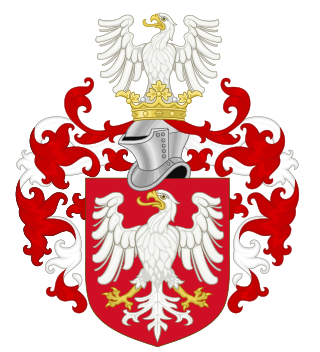
The House of Piast was the first historical ruling dynasty of Poland. The first documented Polish monarch was Duke Mieszko I. The Piasts' royal rule in Poland ended in 1370 with the death of King Casimir III the Great.

Henry II the Pious was Duke of Silesia and High Duke of Poland as well as Duke of South-Greater Poland from 1238 until his death. Between 1238 and 1239 he also served as regent of Sandomierz and Opole–Racibórz. He was the son of Henry the Bearded and a member of the Silesian Piast dynasty. In October 2015, the Roman Catholic Diocese of Legnica opened up his cause for beatification, obtaining him the title of Servant of God.

The Duchy of Greater Poland was a district principality in Greater Poland that was a fiefdom of the Kingdom of Poland. It was formed in 1138 from the territories of the Kingdom of Poland, following its fragmentation started by the testament of Bolesław III Wrymouth. In 1177, the state broke had separated into the duchies of Poznań, Gniezno and Kalisz, and united again in 1279, lasting in that form until 1320, when it was incorporated back into the Kingdom of Poland. Its capital was Poznań.

Bolesław IV the Curly, a member of the Piast dynasty, was Duke of Masovia from 1138 and High Duke of Poland from 1146 until his death in 1173.
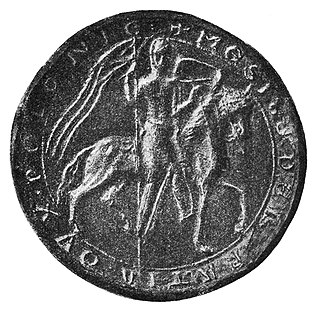
Mieszko III, sometimes called the Old, was Duke of Greater Poland from 1138 and High Duke of Poland, with interruptions, from 1173 until his death.

Leszek the White was Prince of Sandomierz and High Duke of Poland in the years 1194–1198, 1199, 1206–1210, and 1211–1227. During the early stages of his reign, his uncle Duke Mieszko III the Old and cousin Władysław III Spindleshanks, from the Greater Polish branch of the royal Piast dynasty, contested Leszek's right to be High Duke.
Władysław III Spindleshanks, of the Piast dynasty, was Duke of Greater Poland, High Duke of Poland and Duke of Kraków during 1202–1206 and 1228–1231, Duke of Kalisz during 1202–1206, ruler of Lubusz during 1206–1210 and 1218–1225, and ruler over Gniezno during 1216–1217.

The following is a list of monarchs who used the title Duke of Opole and controlled the city and the surrounding area either directly or indirectly.

The Duchy of Silesia with its capital at Wrocław was a medieval provincial duchy of Poland located in the region of Silesia. Soon after it was formed under the Piast dynasty in 1138, it fragmented into various Silesian duchies. In 1327, the remaining Duchy of Wrocław as well as most other duchies ruled by the Silesian Piasts passed under the suzerainty of the Kingdom of Bohemia as the Duchies of Silesia. The acquisition was completed when King Casimir III the Great of Poland renounced his rights to Silesia in the 1335 Treaty of Trentschin.

Bolesław I the Tall was Duke of Wroclaw from 1163 until his death in 1201.

Henry the Bearded was a Polish duke from the Piast dynasty.

Władysław Odonic, nicknamed Plwacz or the Spitter, was a duke of Kalisz 1207–1217, duke of Poznań 1216–1217, ruler of Ujście in 1223, ruler of Nakło from 1225, and duke of all Greater Poland 1229–1234; from 1234 until his death he was ruler over only the north and east of the Warta river.

The Duchies of Silesia were the more than twenty divisions of the region of Silesia formed between the 12th and 14th centuries by the breakup of the Duchy of Silesia, then part of the Kingdom of Poland. In 1335, the duchies were ceded to the Kingdom of Bohemia under the Treaty of Trentschin. Thereafter until 1742, Silesia was one of the Bohemian crown lands and lay within the Holy Roman Empire. Most of Silesia was annexed by the King of Prussia under the Treaty of Berlin in 1742. Only the Duchy of Teschen, the Duchy of Troppau and the Duchy of Nysa remained under the control of the Bohemian crown and as such were known as the Duchy of Upper and Lower Silesia until 1918.

The Silesian Piasts were the elder of four lines of the Polish Piast dynasty beginning with Władysław II the Exile (1105–1159), eldest son of Duke Bolesław III of Poland. By Bolesław's testament, Władysław was granted Silesia as his hereditary province and also the Lesser Polish Seniorate Province at Kraków according to the principle of agnatic seniority.
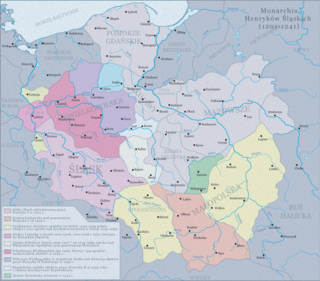
Seniorate Province, also known as the Senioral Province, was a district principality in the Duchy of Poland that was formed in 1138, following the fragmentation of the state. Its ruler held the title of the High Duke, ruling all duchies within Poland. In 1227, following the abolition of the High Duke title, the province was transformed into the Duchy of Kraków.
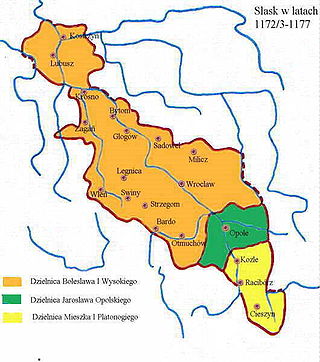
Duchy of Racibórz was one of the duchies of Silesia, formed during the medieval fragmentation of Poland into provincial duchies. Its capital was Racibórz in Upper Silesia.

Duchy of Opole was one of the duchies of Silesia ruled by the branch of Polish Piast dynasty, formed during the medieval fragmentation of Poland into provincial duchies. Its capital was Opole in Upper Silesia.

Casimir I of Opole, a member of the Piast dynasty, was a Silesian duke of Opole and Racibórz from 1211 until his death.
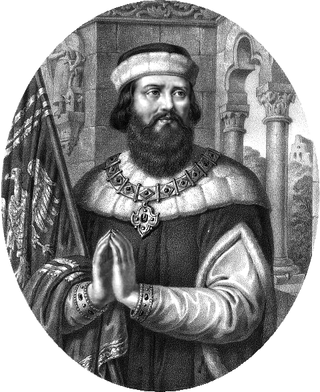
Casimir II the Just was a Lesser Polish Duke of Wiślica from 1166 to 1173, and of Sandomierz after 1173. He became ruler over the Polish Seniorate Province at Kraków and thereby High Duke of Poland in 1177; a position he held until his death, though interrupted once by his elder brother and predecessor Mieszko III. In 1186 Casimir also inherited the Duchy of Masovia from his nephew Leszek, becoming the progenitor of the Masovian branch of the royal Piast dynasty, and great-grandfather of the later Polish king Władysław I the Elbow-high. The honorific title "the Just" was not contemporary and first appeared in the 16th century.

The Duchy of Opole and Racibórz was one of the numerous Duchies of Silesia ruled by the Silesian branch of the royal Polish Piast dynasty. It was formed in 1202 from the union of the Upper Silesian duchies of Opole and the Racibórz, in a rare exception to the continuing feudal fragmentation of the original Duchy of Silesia.


















